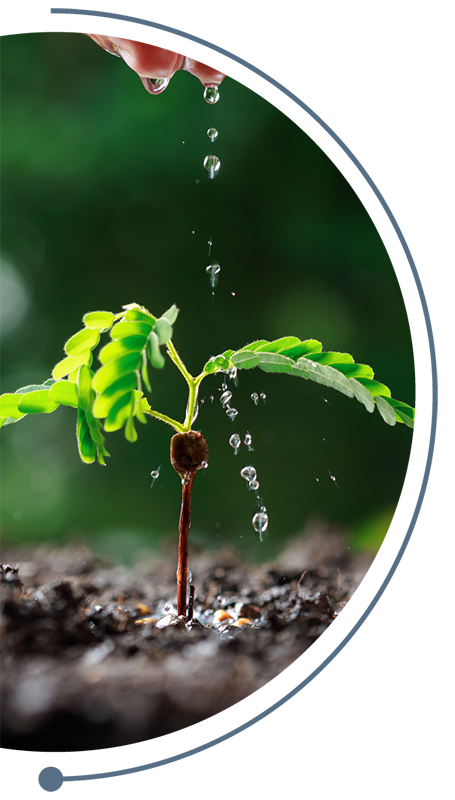FINANCING BIOECONOMY IN
LATIN AMERICA AND THE CARIBBEAN
Mobilizing Private Investments to Promote
Sustainable Development Leveraged by the Bioeconomy

The bioeconomy represents a significant sustainable investment and development opportunity for Latin America and the Caribbean Region (LAC).
Latin America and the Caribbean plays home to 34% of the world’s plant species and 27% of mammals, making it one of the world’s biodiversity “superpowers”. The bioeconomy proposes a new production model based on the sustainable and circular use of natural capital to produce food, energy, and industrial goods through maximizing added value and minimizing waste. It is a cross-cutting model − for both the primary sector and the industrial sector as well as the services sector – that helps to enhance the intrinsic value of biodiversity, mainstreaming it into policy and economic decision-making.
The bioeconomy represents an opportunity for harnessing the potential of LAC’s rich natural capital to boost the region’s socio-economic recovery from the Covid-19 crisis, and as a way to embark the region on a long-term, green and resilient growth path.
Latin America and the Caribbean plays home to 34% of the world’s plant species and 27% of mammals, making it one of the world’s biodiversity “superpowers”. The bioeconomy proposes a new production model based on the sustainable and circular use of natural capital to produce food, energy, and industrial goods through maximizing added value and minimizing waste. It is a cross-cutting model − for both the primary sector and the industrial sector as well as the services sector – that helps to enhance the intrinsic value of biodiversity, mainstreaming it into policy and economic decision-making.
The bioeconomy represents an opportunity for harnessing the potential of LAC’s rich natural capital to boost the region’s socio-economic recovery from the Covid-19 crisis, and as a way to embark the region on a long-term, green and resilient growth path.

Over half the world’s total GDP – US$ 44 trillion of economic value generation is estimated to be dependent on nature and its services.

Ecosystem services provide benefits worth US$ 125–140 trillion per year.

US$ 4-20 trillion per year owing to land-cover change and USD 6-11 trillion per year from land degradation over 1997 and 2011.
Sustainable food and land use-business models could be worth up to US$2.3 trillion per year and provide over 70 million jobs by 2030.


COVID-19 Economic Recovery: Several governments in LAC see the
bioeconomy as a tool for sustainable development, and a strategy for
economic diversification and recovery from the impacts of the Covid-19
pandemic. Several LAC countries – e.g. Brazil, Costa Rica, Colombia and
Ecuador − have made significant steps in the elaboration of policy frameworks
and strategies for the development of the bioeconomy. Identifying numerous
bio-entrepreneurs across multiple sectors – from agriculture to energy, including
non-conventional sectors such as chemicals and pharmaceuticals.
Several barriers hinder the development of the bioeconomy in
the region and constrain the flow of private investment in this
high-impact area.




Investors’ interest in biodiversity is increasing because they understand that business factors rely on natural capital.
Investors are calling for investment principles and metrics, and looking for investable opportunities.
Financial regulators are calling for the mainstreaming biodiversity in investment and financing decisions-making in light of the potential financial risks associated with environmental degradation.
The IDB’s Natural Capital Lab is supporting these efforts and intermediating with these private investors, countries, and projects.

An Innovative approach!
The Inter-American Development Bank (IDB) proposes an integrated strategy to tackle the identified barriers and to scale up public and private investment in the bioeconomy sector, with a perspective of accelerating the region’s sustainable recovery. This strategy is a joint work of two of its divisions, the Connectivity, Markets and Finance Division (CMF) and the Natural Resources and Disaster Risk Management (RND) Division, under the umbrella of the IDB’s Natural Capital Lab.
The IDB’s holistic strategy is grounded in three interrelated components aimed
at scoping and strengthening bio-enterprises and related value chains in
biodiversity-rich countries:
at scoping and strengthening bio-enterprises and related value chains in
biodiversity-rich countries:



IDB will leverage its strategic partnership with National Development Banks and
technical back stoppers to implement these components and reach to eligible
small, medium and large bio-enterprises, and the “anchor” buyers of
their products and services
technical back stoppers to implement these components and reach to eligible
small, medium and large bio-enterprises, and the “anchor” buyers of
their products and services

IDB’s strategy promotes the growth of the sustainable finance market in LAC by providing private investors and financiers with vehicles to allocate funds in natural capital projects and ventures.
By designing bespoke investment vehicles and criteria and supporting the development of investable natural capital project pipelines, IDB will improve private investors and other type of ´financiers’ ability to invest in LAC’s biodiversity.

IDB integrated strategy seeks to deliver “S.M.A.R.T.”
socio-economic, environmental and climate benefits.
Designed to accelerate the sustainable recovery of LAC countries and to contribute to the attainment of the Paris Agreement objectives, National Biodiversity Action Plans and CBD targets, as well as the Sustainable Development Goals, the IDB’s comprehensive package for the bioeconomy has the potential of delivering multiple benefits including:






 Manténgase Informado sobre el Financiamiento Verde
Manténgase Informado sobre el Financiamiento Verde






